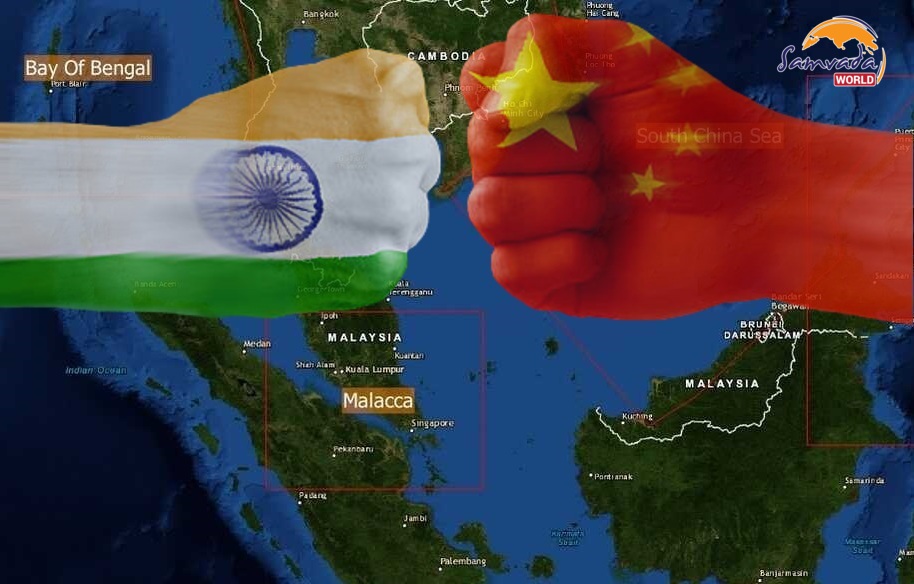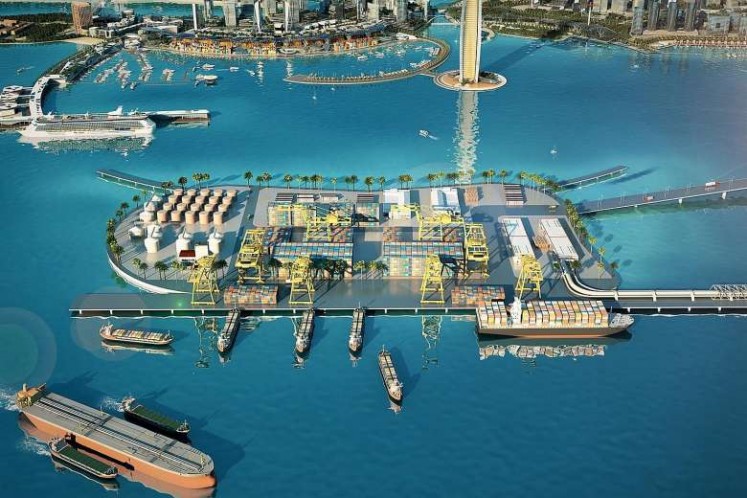|
Getting your Trinity Audio player ready...
|

- More than 30 per cent of the world’s seaborne trade passes through the Malacca Strait with China, Japan, and South Korea reliant on this strategic waterway for their supplies, especially energy.
- Beijing is seeking alternative routes to reduce its dependence on the waterway to ensure a more viable long-term energy security policy.
- China’s Strategic influence in the Indo pacific region is bearing severe economic consequences and instability within the countries.
- India needs to recalibrate its strategy with regard to Malacca Strait and increase its naval presence in the region.
- Building proactive formal frameworks toward initiating greater institutional dialogue with the adversaries must be initiated at the earliest.
While China is actively seeking to diversify energy routes to reduce its dependence on the Straits of Malacca, the strategic waterway still remains a safer bet than other untested alternatives. The Straits of Malacca and Singapore are one of the most vital sea lines of communication in the world, constituting the principal passage from the Indian Ocean to the South China Sea. More than 30 per cent of the world’s seaborne trade passes through this narrow 500 nautical-mile-long waterway. Apart from serving the strategic needs of the riparian states, China, Japan, and South Korea are reliant on this strategic waterway for their supplies, especially energy.
Despite increased imports through Russia and Kazakhstan, China remains heavily dependent on Middle Eastern oil, with up to 80 per cent of its energy supply passing through the Straits. Having little control over the passage, any disruption – ranging from piracy to fears of a potential naval blockade by the United States and its allies – will have an adverse impact on China’s long-term food and energy security.
Alternative Routes
Beijing is seeking alternative routes to reduce its dependence on the waterway to ensure a more viable long-term energy security policy. Already in 2003, then-President Hu Jintao identified the need to mitigate what he termed China’s “Malacca Dilemma. “As part of its Belt and Road initiative, China is developing several major new routes that are likely to reduce China’s dependency on the Malacca Straits as a conduit for oil imports. One route is China’s trans-Myanmar oil and gas pipelines. A gas pipeline was already opened in 2016 while construction of its sister oil pipeline between the Port of Sittwe in Burmese waters and Kunming in China’s Yunnan province was completed in 2019. It is estimated that some 22 billion tonnes of crude oil and 13 billion cubic feet of gas will pass through the pipelines annually by 2030.
Secondly, the Pakistan-China Economic Corridor is a development project to link Gwadar Port in southern Pakistan to China’s north-western region of Xinjiang by means of highways, railways, and pipelines. When completed, China will be able to use this land bridge to transport supplies from the Persian Gulf.
Apart from these routes, there are proposals to develop two land bridges – including an oil pipeline and a railway – linking ports on the west and east coasts of the Malay Peninsula. Beijing is funding these projects with the intention of bypassing the Strait of Singapore – the narrowest chokepoint of the Malacca Straits.
Beijing is funding an oil pipeline and a railway linking ports on the west and east coasts of the Malay Peninsula with the intention of bypassing the Strait of Singapore – the narrowest chokepoint of the Malacca Straits.
A further route, still under discussion, is the proposal to construct a canal across the Isthmus of Kra in southern Thailand. Although the canal project has not become officially part of the Belt and Road initiative and has encountered political resistance, there are unconfirmed talks between commercial parties in China and their counterparts in Thailand. China has also expressed interest in Arctic shipping routes along the Northern Sea Route and through the Northwest Passage, though their feasibility amidst challenges of climate and lack of infrastructure, among others, remains uncertain.
Capacity and Feasibility
No one knows precisely how much oil and gas will go through the alternative routes and how much time they will take to reach their final destinations. Other question marks include insurance charges and storage facilities. Thus, the relative economic costs vis-à-vis the Malacca Straits – even if physical distance is reduced – remain to be seen. Perhaps more pertinent still is that the security of the pipelines and land bridges of the alternative routes is untested. Unlike passage through the Straits of Malacca which is governed by international law, the legal regime on land will be subjected to national laws as well as vulnerable to potential instability – Myanmar’s restive ethnic regions being a case in point.
The international legal regime at sea is more predictable and more elaborate compared with the domestic legal regime applicable on the alternative land routes. The United Nations Convention on the Law of the Sea (UNCLOS) establishes a regime of transit passage in strategic waterways that make it illegal for riparian states to hinder passage or impose levies on passing vessels.
As such, the International Maritime Organization and the three coastal states abutting the Straits of Malacca and Strait of Singapore have succeeded in ensuring a safe and clean passage regime in the waterway. According to the London-based International Maritime Bureau, there has been a significant decline of incidents involving piracy and sea robberies in the Straits of Malacca as of 2016 “due to the increase and aggressive patrols by the littoral states authorities since July 2005.”
A Key Focus for China

Apart from a well-established insurance and reinsurance regime, the ports along the Straits of Malacca and Singapore provide excellent repair and bunkering services that are likely to take time to replicate on land. China is in fact expending considerable investment in the Straits. Notable infrastructure and mixed development projects include the off-shore Melaka Gateway and Forest City projects – both joint ventures with Malaysia. Boosting bilateral ties and trade between the two countries, critics point to China seeking to consolidate its strategic access over the Straits. Once completed, the China-proposed and funded Belt and Road projects will undoubtedly alter the traditional trading routes in the region. However, just as in ancient times, the Malacca Straits will continue to remain a key focus for China in the foreseeable future.
The Malacca Strait will be one of the most crucial geo-strategic sea routes to have checks and balances on the Chinese hegemonic character.
China’s Strategic influence in the Indo pacific region is bearing severe economic consequences and instability within the countries. In this regard, India too needs to recalibrate its strategy with regard to Malacca Strait and increase its naval presence in the region as it would be one of the most crucial geo-strategic sea routes to have checks and balances on the Chinese hegemonic character. A new alliance surrounding the East Asian region must be formed under the Indian leadership to create the counter strategies for the Chinese game plan in the region and to issue a counter agenda towards the American vision of the Indo-pacific, which would send across a stern message from India, towards the global strategic community which would reposition India’s foreign policy position pacifism to pragmatic realpolitik.
As the multilateral institutions, arrangements and assumptions of world politics and world order of the past, are becoming irrelevant in the wake of the Chinese resurgence. A new Indian outlook with a substantial strategic outlook becomes the need of the hour, especially in this highly sensitive East Asian, which is extremely vulnerable to Chinese brutality. But despite all these trials and tribulations, building proactive formal frameworks toward initiating greater institutional dialogue with the adversaries must be initiated at the earliest.
(The author has an MA in International Relations. Views expressed are the author’s own)
Viswapramod is a PhD Scholar at the Department of International Studies and Political Science, Christ University, Bangalore. He has an MA in International Relations. Views expressed are the author’s own.
